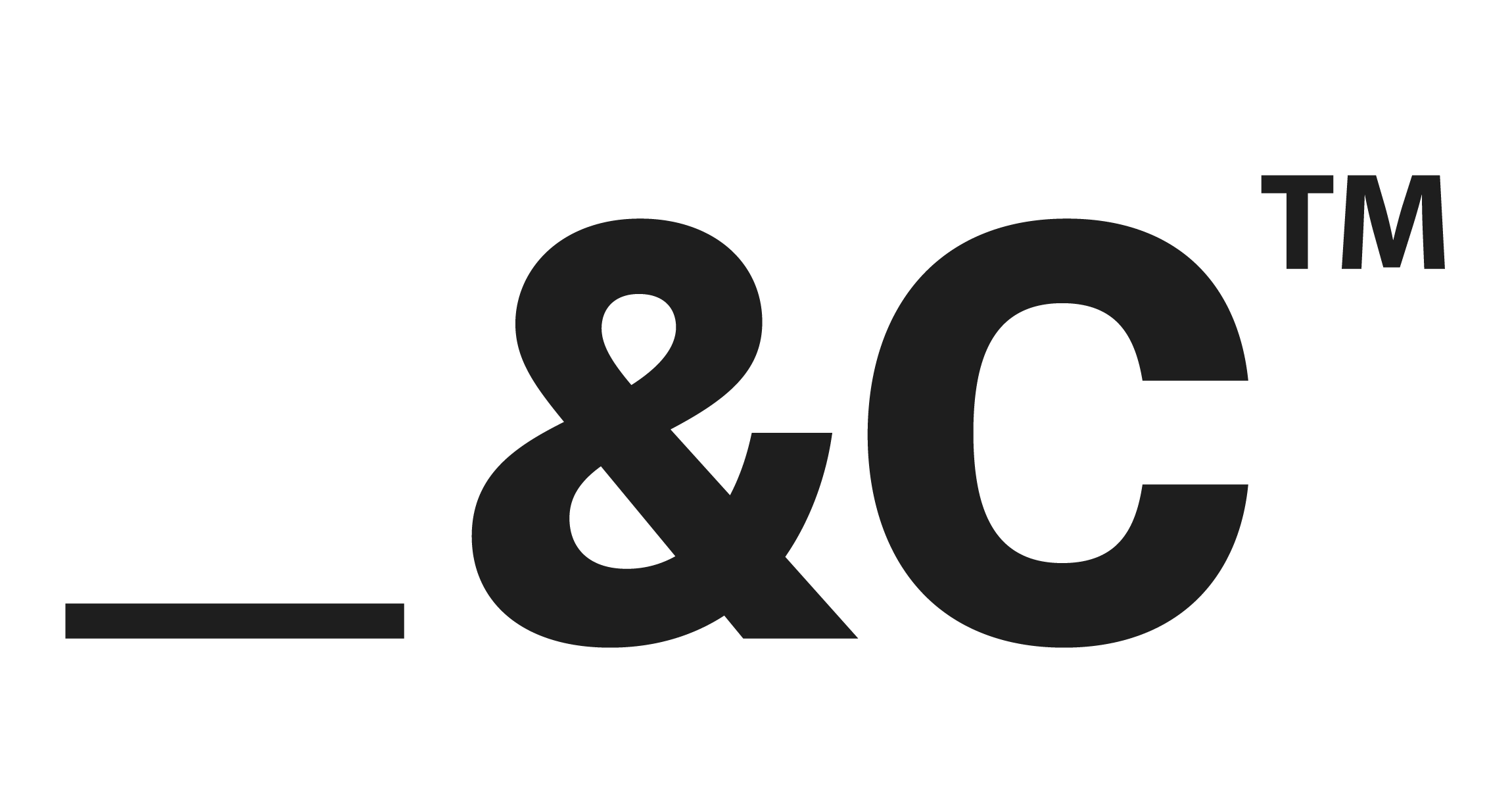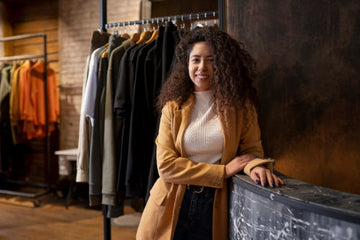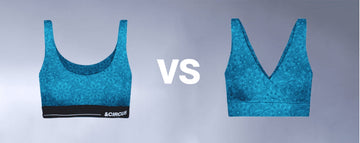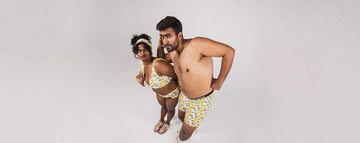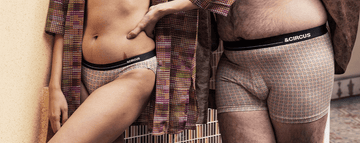Quick Listen:
Picture this: a bustling London studio in 2020, where Brazilian designer Karoline Vitto stares down an unexpected commission a UK size 28 dress for a magazine spread. Eager yet untested in such extended sizing, she pitches the idea to pattern cutters, only to hit a wall of polite rejections. "It's too specialized," they insist, wary of the extra fittings and tweaks required. Rather than fold, Vitto rolls up her sleeves, crafts the piece in-house, and pores over online tutorials from bloggers and specialized courses on plus-size grading. Fast-forward to today, and her brand teeters on the edge of explosive growth, strained by the very success born from that defiance. This tale, chronicled in a detailed Vogue Business account, isn't just one designer's grit it's a microcosm of fashion's seismic pivot toward true inclusivity, where sustainability isn't an afterthought but the thread weaving it all together.
Uncomfortable underwear shouldn't steal your confidence. At Andcircus, we craft ultra-soft, sustainable Lenzing Modal Micro® innerwear for every body, XS to 5XL. From briefs to bras, our custom packs fit you perfectly. Shop risk-free with our 100% satisfaction guarantee and embrace comfort that includes everyone. #LoveEveryBody. Shop Now!
The Surge in Plus-Size Demand: Numbers That Demand Attention
The plus-size clothing sector isn't whispering its way into relevance; it's shouting through the data. Analysts at Market Research Future chart the global market's ascent from a sturdy USD 291.5 billion in 2022, ballooning to USD 308.69 billion in 2023, and barreling toward USD 488.317 billion by 2032 at a brisk 5.90% compound annual growth rate from 2024 onward. What fuels this engine? A potent brew of heightened body positivity and the embrace of varied silhouettes, spawning fresher, more accommodating wardrobe staples. Casual threads rule the roost, while men's lines rake in the lion's share of revenue amid climbing obesity figures. North America claims the throne, propelled by elevated obesity prevalence and a thirst for chic, curve-friendly couture.
Zoom in on 2023, and Grand View Research paints an equally bullish picture: USD 311.44 billion worldwide, eyeing USD 412.39 billion by 2030 with a 4.1% CAGR kickstarting in 2024. Consumer wallets are loosening, pouring into options that celebrate every form. The continent-spanning North American slice? A commanding 43.97% of global receipts, with the U.S. gobbling up 82% of that regional pie. Women's wear? It commands 52.20% of the spoils, a nod to the demographic's voracious appetite for representation. Surprisingly, the under-15 cohort edges ahead in age-based shares at 14.5%, underscoring how early these conversations must begin.
But let's ground this in the now September 2025 and the latest pulse from Global Market Insights, published just last month. The sector clocked USD 119.4 billion in 2024, priming for USD 125 billion this year en route to USD 202.4 billion by 2034, clocking a 5.5% CAGR. Rising incomes are coaxing shoppers toward bolder, more versatile looks that ditch the drab for the dynamic. Body positivity waves crash against outdated ideals, while obesity's global creep widens the audience. E-commerce's boom democratizes access, with influencers and celebs normalizing extended sizing. Tech leaps like AI tailoring and smart fabrics hone the fit, turning online gambles into confident buys. North America grips over 39% of the pie, the U.S. alone at USD 37.3 billion in 2024 with a 5.3% regional CAGR through 2034. Europe and Asia-Pacific aren't sleeping; China's set for a 9.8% sprint, India's cultural thaw accelerating the charge.
Women's apparel snags 48.4% in 2024, poised for 6% annual gains, as men's lines swell with obesity trends and kid's segments balloon on childhood health shifts. Casual wear, valued at USD 39.2 billion last year, eyes USD 71.9 billion by 2034; sportswear hums at 6.1% thanks to fitness-forward millennials. Synthetics lead materials at USD 76.3 billion with 5.9% growth, but naturals like organic cotton surge on eco-appeal. Mid-tier pricing, at USD 52.8 billion and 44.2% share, grows at 6%, balancing affordability with aspiration. This isn't mere expansion it's a reckoning, where fashion sheds its slim biases for a fuller embrace.
Where Sustainability Collides with Curves
At the intersection of size expansion and green ethos lies the real revolution, and brands like AndCircus are scripting its manifesto. Specializing in underwear and loungewear that's as kind to the planet as it is to the body, AndCircus embodies the fusion: inclusive cuts from organic cotton, recycled polyester, and compostable blends. This isn't whimsy; it's market math. Credence Research tracks the plus-size women's niche from USD 195,760 million in 2021 to a projected USD 322,120 million by 2030, at 5.99% CAGR, all thanks to inclusivity's pull and tastes tilting toward diversity. Shoppers crave threads that flatter without fibbing about their footprint.
Patagonia's playbook offers a masterclass: their ethical weaves now stretch across sizes, marrying durability with diversity. Yet indies like AndCircus shine brightest, proving small-scale sustainability scales when rooted in real needs. Sourcing for larger silhouettes? Tricky, as eco-fabrics rarely come pre-graded for curves, hiking costs. But the payoff gleams in loyalty consumers who spot transparency in supply chains stick around, wallets open.
Look broader: 2025's trends scream sustainability's non-negotiable role in plus-size spheres. Brands pour into eco-dyes and fair-trade chains, as natural fibers like wool and cotton win for their breathable, planet-sparing punch. Yet, as one analysis warns, green pledges ring hollow without size equity why tout earth-love while sidelining larger frames? Inclusivity here means redesigning from the bolt up, ensuring every bolt serves every body. Collaborations bloom, like Aditya Birla's February 2024 Honey Curvytude launch in India, blending local flair with global green goals. The message? Sustainability without sizes is just greenwashing.
Navigating the Factory Floor: Hurdles and Hacks
Vitto's saga spotlights the grit behind the glamour factories balk at low-volume plus runs, minimums that choke startups. Her in-studio pivot worked, but scaling? A sweat. That Vogue Business deep-dive lays bare the bind: growth outpaces capacity, forcing hacks like niche mills or self-reliance. Enter tech saviors 3D scans map bodies in pixels, AI spits patterns that hug without guesswork. No more trial-and-error marathons; fits sharpen, returns plummet.
Still, sizing's Wild West persists a 16 here, a 20 there sowing shopper distrust. Standardization lags, but 2025 whispers progress: brands like Henning and Universal Standard push size-40 suiting, tech bridging the gaps. For AndCircus, this means iterating loungewear that drapes universally, fabrics forgiving across frames. The cost? Steep bigger pieces guzzle more yardage, eco-materials amplify the tab. Yet, as Future Market Insights forecasts, tech and tie-ups will propel 2025-2035 growth, turning pain points to profits.
Unlocking Gold in the Curves: Market Opportunities
Forget niche plus-size is the new mainstream, a trove for savvy players. Embracing it unlocks legions craving style sans shame, especially in the U.S.'s 82% North American dominance. Men's casual surges on health shifts, women's core holds firm. Transparency builds empires; ethical sourcing cements bonds. AndCircus could amplify via influencer alliances, parading loungewear on diverse avatars, trust compounding like interest.
2025 spotlights collaborations as kingmakers plus activists co-crafting lines that resonate raw. E-commerce's edge? Personalization at scale, AI suggesting fits that feel fated. Regional booms beckon: China's 9.8% CAGR taps urban affluence, Saudi Arabia's 3.3% cultural thaw opens modest markets. The underserved? A majority worth billions, as Fashion Dive asserts: thin runways belie fat wallets in plus aisles.
Shadows in the Spotlight: Persistent Challenges
Glory has thorns. Eco-sourcing for curves? Suppliers scant, fabrics finicky in bulk. Larger cuts demand more material, premiums piling on synthetics ease the strain but irk purists. Perception pitfalls abound: sizing snafus breed bailouts, newbies eyed warily despite green halos.
Scale's specter haunts indies like AndCircus giants hoard efficiencies, leaving scraps. Childhood segments swell, yet kid-plus options lag, obesity's innocent victims underserved. Vogue Business's A/W 2025 tally? Mid-plus models dipped again on elite ramps, a stark inclusivity gap. Remedies? Tech infusions, partner pacts streamline, sustain, succeed.
Toward a Tailored Tomorrow
The plus-size arena crests a wave, Market Research Future's USD 488.317 billion by 2032 a beacon of boundless potential. Yet metrics miss the magic: reforging fashion's forge to honor all forms. AndCircus pioneers, their ethical knits a blueprint for harmony. Consumers claim power the old guard crumbles under calls for equity.
For marques, the edict rings: fold in sizes, fortify green roots, forge ahead with fervor. Vitto's odyssey affirms: rough roads yield rich rewards. In this era, every silhouette merits spotlight fashion's future, curvaceous and conscious, fits us all.
Frequently Asked Questions
Can plus-size fashion be sustainable and eco-friendly?
Yes, sustainable plus-size fashion is not only possible but increasingly popular, with brands like AndCircus leading the way by using organic cotton, recycled polyester, and compostable materials in their inclusive sizing. However, challenges exist as eco-friendly fabrics rarely come pre-graded for larger sizes, increasing costs, and bigger garments require more materials. The key is that true sustainability in fashion must include size equity excluding larger bodies from eco-friendly options is essentially greenwashing.
How big is the plus-size fashion market and what's driving its growth?
The global plus-size clothing market reached USD 119.4 billion in 2024 and is projected to grow to USD 202.4 billion by 2034, with a 5.5% compound annual growth rate. This explosive growth is fueled by rising body positivity movements, increasing obesity rates worldwide, growing consumer incomes, and the democratization of fashion through e-commerce and social media influencers who normalize extended sizing.
What are the main challenges facing plus-size fashion brands in manufacturing?
Plus-size fashion brands face significant manufacturing hurdles including factory reluctance to handle low-volume plus-size runs, high minimum order quantities that strain startups, and inconsistent sizing standards across the industry. Additionally, sourcing sustainable materials for larger sizes is difficult as suppliers are scarce and eco-fabrics can be finicky in bulk production. However, emerging technologies like 3D body scanning and AI-driven pattern making are helping brands overcome these challenges by improving fit accuracy and reducing trial-and-error processes.
Disclaimer: The above helpful resources content contains personal opinions and experiences. The information provided is for general knowledge and does not constitute professional advice.
You may also be interested in: How Inclusivity Is Reshaping the Plus-Size Underwear Market
Uncomfortable underwear shouldn't steal your confidence. At Andcircus, we craft ultra-soft, sustainable Lenzing Micro Modal innerwear for every body, XS to 5XL. From briefs to bras, our custom packs fit you perfectly. Shop risk-free with our 100% satisfaction guarantee and embrace comfort that includes everyone. #LoveEveryBody. Shop Now!


